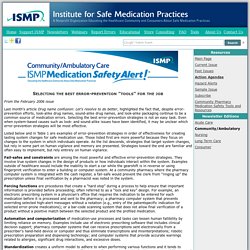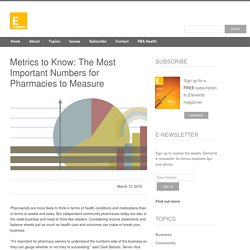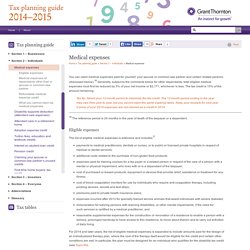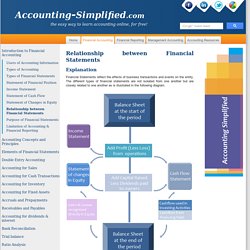

Selecting the Best Error-prevention “Tools” for the Job. Selecting the best error-prevention "tools" for the job From the February 2006 issue Last month’s article Drug name confusion: Let’s resolve to do better, highlighted the fact that, despite error-prevention efforts, look-alike drug names, sound-alike drug names, and look-alike packaging continue to be a common source of medication errors.

Selecting the best error-prevention strategies is not an easy task. Even when system-based causes such as look- and sound-alike issues have been identified, it may be unclear which error-prevention strategies will be most effective. Listed below and in Table 1 are examples of error-prevention strategies in order of effectiveness for creating lasting system changes for safe medication use.
Fail-safes and constraints are among the most powerful and effective error-prevention strategies. Automation and computerization of medication-use processes and tasks can lessen human fallibility by limiting reliance on memory. Metrics to Know: The Most Important Numbers for Pharmacies to Measure. Metrics to Know: The Most Important Numbers for Pharmacies to Measure Pharmacists are more likely to think in terms of health conditions and medications than in terms of assets and sales.

But independent community pharmacies today are also in the retail business and need to think like retailers. Considering income statements and balance sheets just as much as health care and outcomes can make or break your business. “It’s important for pharmacy owners to understand the numbers side of the business so they can gauge whether or not they’re succeeding,” said Clark Balcom, Senior Vice President and Chief Operating Officer of PBA Health, a pharmacy services organization that provides business products and services for independent community pharmacies. “They—like all businesses—need to recognize trends and learn when to make changes in their operations and strategies. The market is tough for pharmacies.
Get ready to dive into your numbers. Sales Volume & Growth Total Prescriptions Profitability. Outdoor Advertising. Pattison Outdoor. Nhex_2014_report_en.pdf. The Tax planning guide 2014-2015. You can claim medical expenses paid for yourself, your spouse or common-law partner and certain related persons (discussed below).16 Generally, subject to the comments below for other dependants, total eligible medical expenses must first be reduced by 3% of your net income or $2,171, whichever is less.

The tax credit is 15% of the amount remaining. Tax tip: Select your 12-month period to maximize the tax credit. The 12-month period ending in the year may vary from year to year, but you cannot claim the same expense twice. Keep your receipts for next year if some of your 2014 expenses are not claimed as a credit in 2014. 16 The reference period is 24 months in the year of death of the taxpayer or a dependent. Eligible expenses The list of eligible medical expenses is extensive and includes17 17 Certain conditions must be met.
Medical expenses of dependants other than a spouse or common-law partner Subject to special rules, you may also claim medical expenses you have paid for a dependant. March-6-2012. Labour force characteristics, unadjusted, by census metropolitan area (3 month moving average) (London (Ont.), Windsor (Ont.), Barrie (Ont.)) Why do accountants use debits and credits instead of simple pluses and minuses? Why is the notation for a debit "DR"? Debits and credits, and the technique of double-entry accounting, are credited (no pun intended) to a Franciscan monk by the name of Luca Pacioli.

Known as the "Father of Accounting", he warned that you should not go to sleep until your debits equaled your credits. Let's review the basics of Pacioli's method of bookkeeping. On a balance sheet or in a ledger, assets = liabilities + owner's equity. An increase in the value of assets is a debit to the account, and a decrease is a credit. On the flip side, an increase in liabilities or owner's equity is a credit to the account, and a decrease is a debit. Having Latin roots, the term "debit" comes from the word "debitum", meaning "what is due", and "credit" comes from "creditum", defined as "something entrusted to another or a loan". What about the terms' abbreviations? Debit Definition. Relationship & Links between different Financial Statements. Explanation Financial Statements reflect the effects of business transactions and events on the entity.

The different types of financial statements are not isolated from one another but are closely related to one another as is illustrated in the following diagram. Balance Sheet Balance Sheet, or Statement of Financial Position, is directly related to the income statement, cash flow statement and statement of changes in equity. Assets, liabilities and equity balances reported in the Balance Sheet at the period end consist of: Income Statement Income Statement, or Profit and Loss Statement, is directly linked to balance sheet, cash flow statement and statement of changes in equity.